I keep telling people that a functional hoof and functional biomechanics in movement go hand in hand.
This time I have chosen an interesting example from my cases. To make the whole thing a little more descriptive for you.
This case is nice (certainly not so nice for the horse), because one of the hooves is more affected than the other side and the horse’s movement on the right hand is affected more strongly than on the left.
First to the hoof:
The problem of the long toe and the underrun heel is a disturbation of the dorsal and palmar hoof balance.
Simply explained, the hoof can be divided into a supporting surface around the heel(on which the weight of the horse can rest) and a leverage surface in the arear of the toe (over which the horse must roll with muscle power). The ratio of the areas to each other should be approx. 1:1, the widest part of the hoof marks the dividing line seen from below.
Seen from the side, 50% of the contact area of the hoof should be in front and 50% behind the widest part. Then the hoof would be in dorsal and palmar equilibrium. Mind you, in this case we are only talking about the forelimbs.
Hoof right side
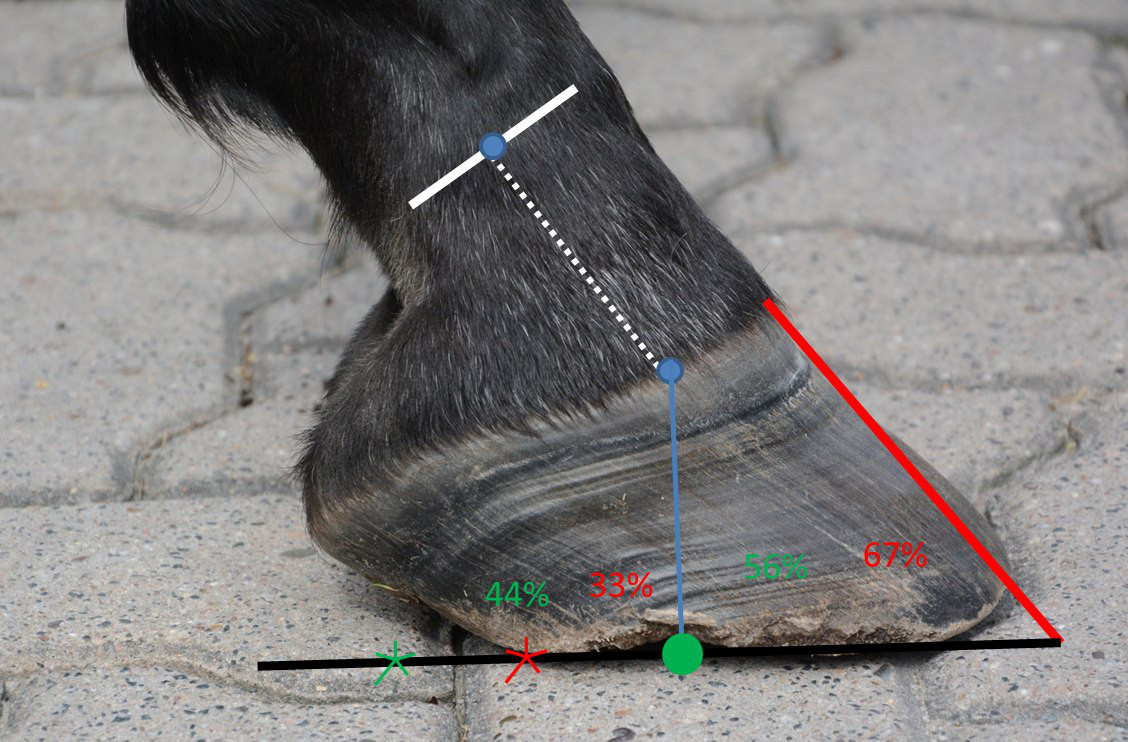
Hoof left side
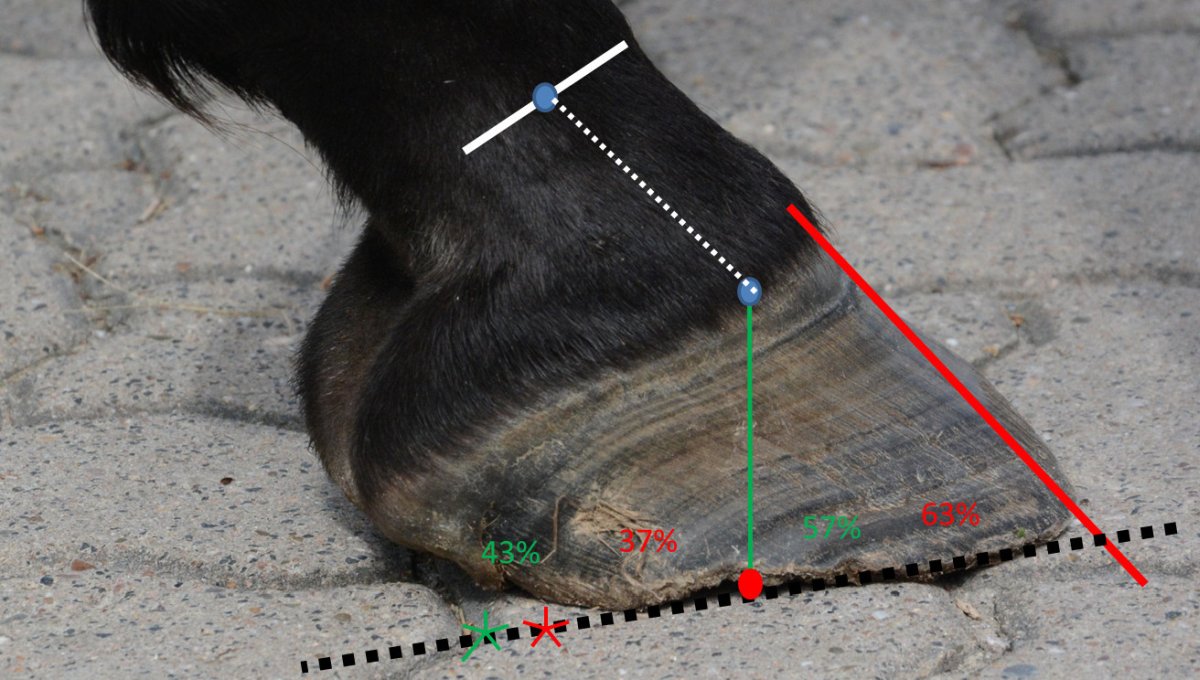
The horse is an Andalusian horse. In this breed problems with the dorsal and palm hoof balance can occur more often. They have less concavity in the sole and less hoof height, so problems like these are more difficult to correct.
In this case I have drawn you the corrected line of the dorsal hoof wall. The section of the hoof that starts directly below the coronary band usually runs about 1-2 cm parallel to the coffin bone before deviating in case there are problems. In this section you can see the actually desired angle of the front hoof wall.
The drawn white line in this picture marks the width of the fetlock bone.
The dotted line ends with the blue dot on the coronary band in the middle of the coffin joint area, the green dot marks the widest part of the hoof at the supporting edge.
So you can see that the right hoof is worse than the left one and that after correct correction the ratio of both hooves is about 45% to 55% (before correction red star, after green star).
Not perfect, but it probably works for this horse to avoid the following problems.
Extension right leg
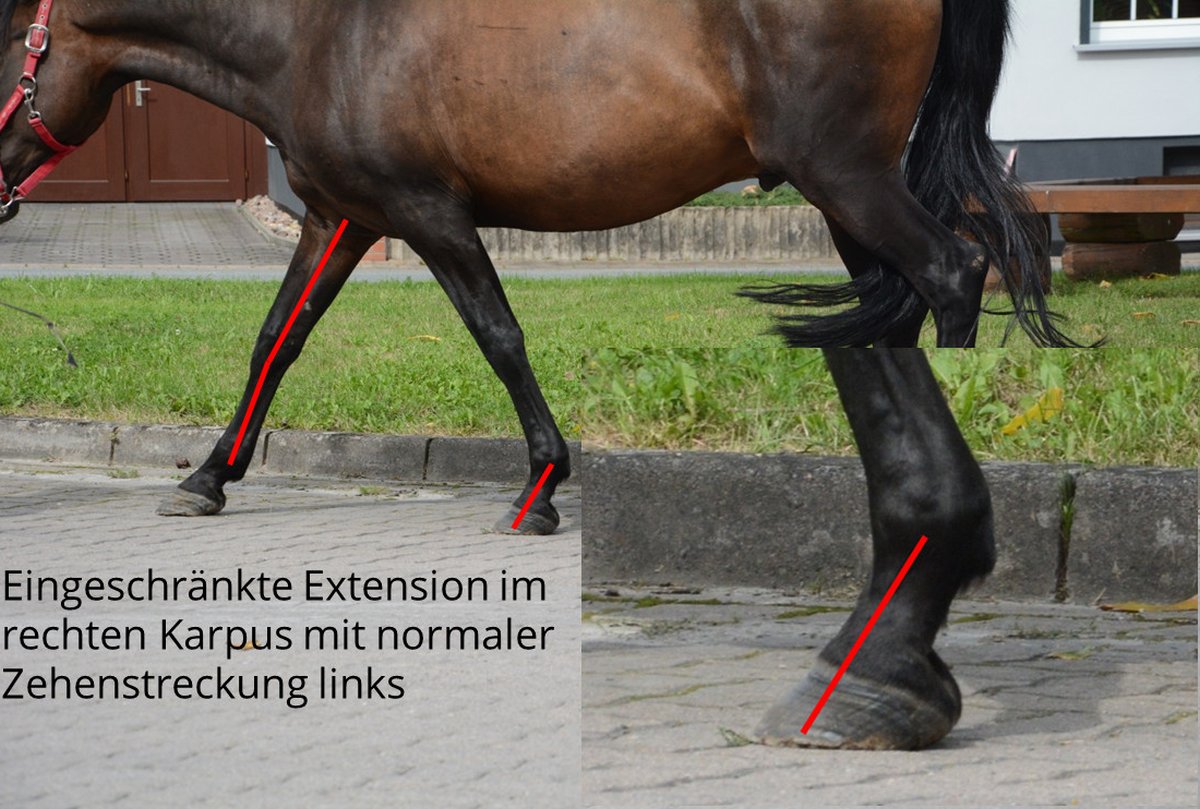
Extension left leg
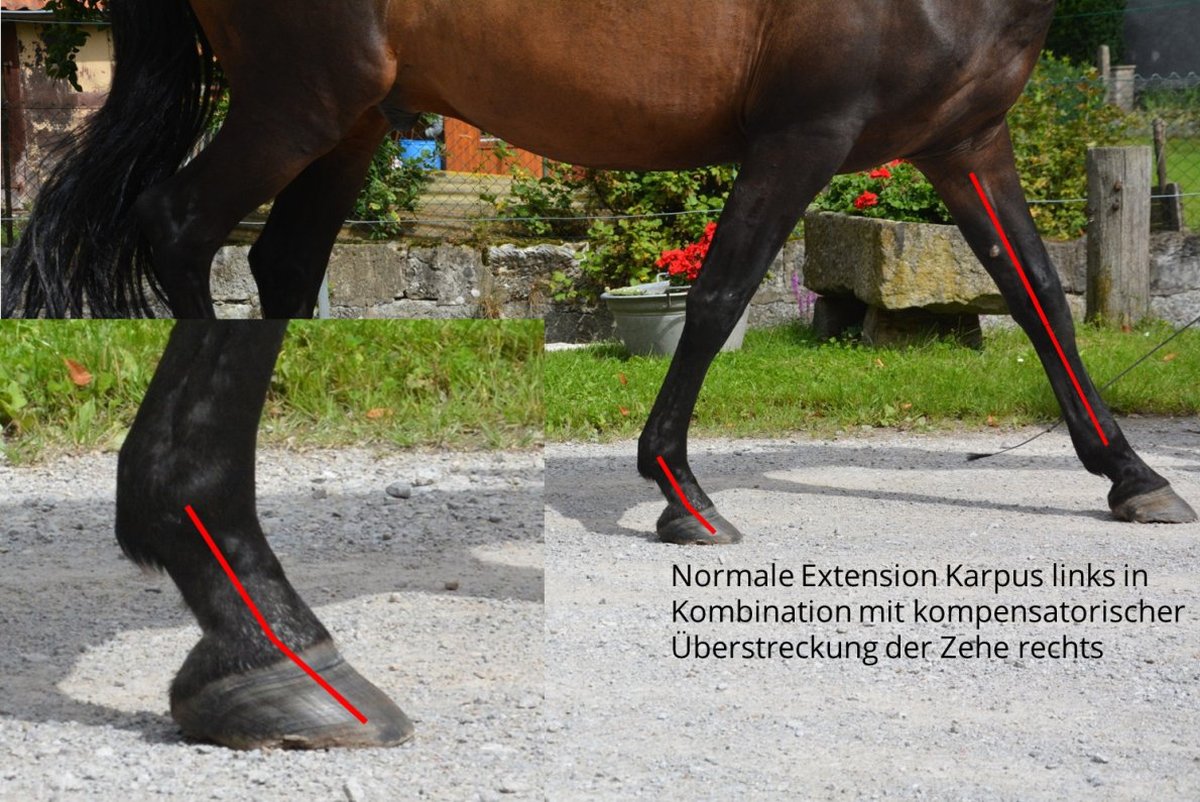
If you look at the right and left front limb in the phase of maximum forward extension, you can see that the right side is not fully stretched when gettin ground contact.
This means the movement over ground in forward extension on the right side is shorter than on the left side. Some horses with this problem may have a slight limp. More often they compensate in moving farhter into backward flexion, which can be problematically, too.
If you look at the limbs in maximum backward flexion, you can see that at the last moment of the supporting phase on the right side, the hoof, pastern and fetlock joints are stretched much more strongly than the joints at the same moment on the left side (you can almost see a break in the coffin joint).
That will result in joint injuries in the dorsal part of the fetlock, pastern and more common in the coffin joint.
Overextension Coffin Joint
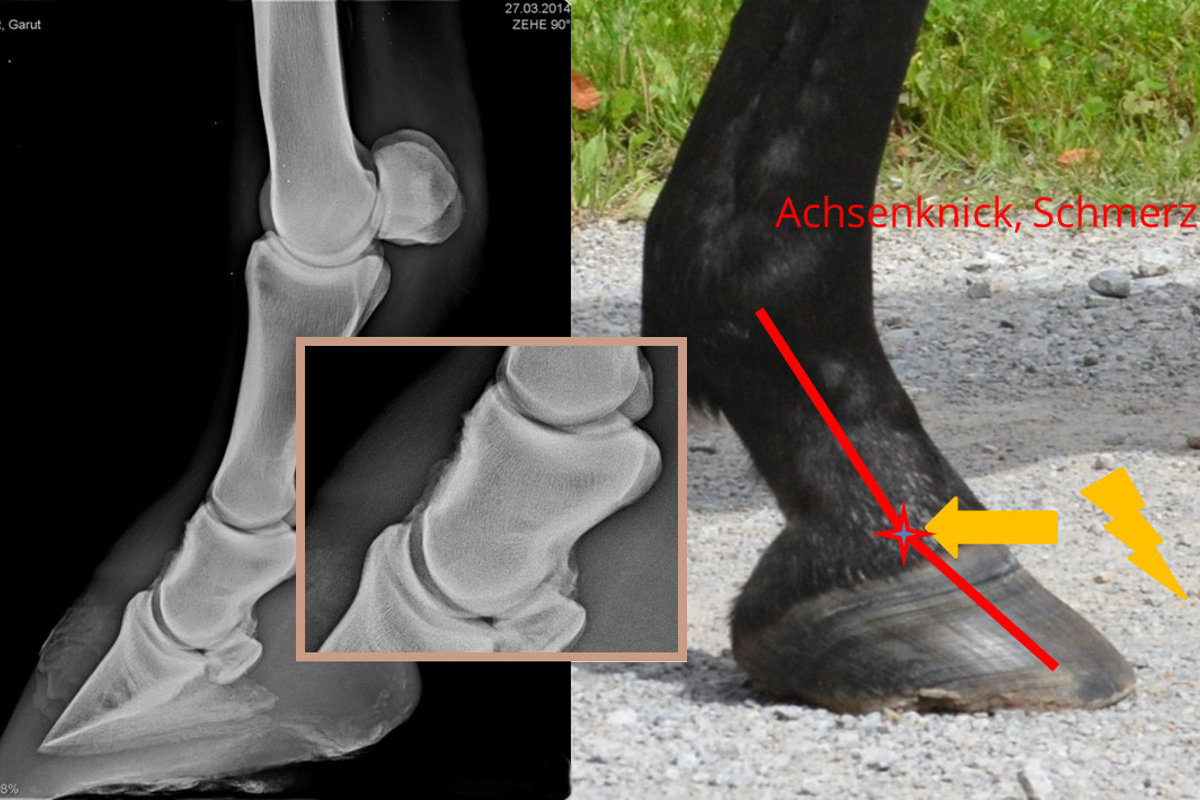
What problems arise from this?
First of all, the horse gets ground contact full force with a slightly bent leg, i. e. it can stumble more easily than horses with fully stretched limbs.
In maximal extension, both flexors and extensors of the respective joints are toned, the flexor tendon has its maximum in lenght and the suspensory ligaments are able to load weight. In the case of incomplete stretching, the aprime uptake of the body weight with bent toe joints leads to a sudden hyperextension of the toe joints, because the flexors and suspensory ligaments do not yet have sufficient tone to smoothly stop the forward momentum.
These facts and another factor, which I will explain in the next part, can lead to an overload / overstretching of the flexor tendons and suspensory ligaments.
In addition, the flexed toe joints are not fully stabilized by their collateral ligaments, i. e. they are also laterally unstable in rotation and adduction/abduction and can easily sustain injuries in the ligaments or joint capsule area (microcracked ligaments / capsule > ringbone, arthritis in the coffin joint).
In the next part I’m going to talk about muscular problems higher up, that occure with the problem long toe / underrun heel.
Stay tuned.